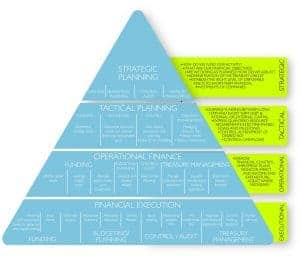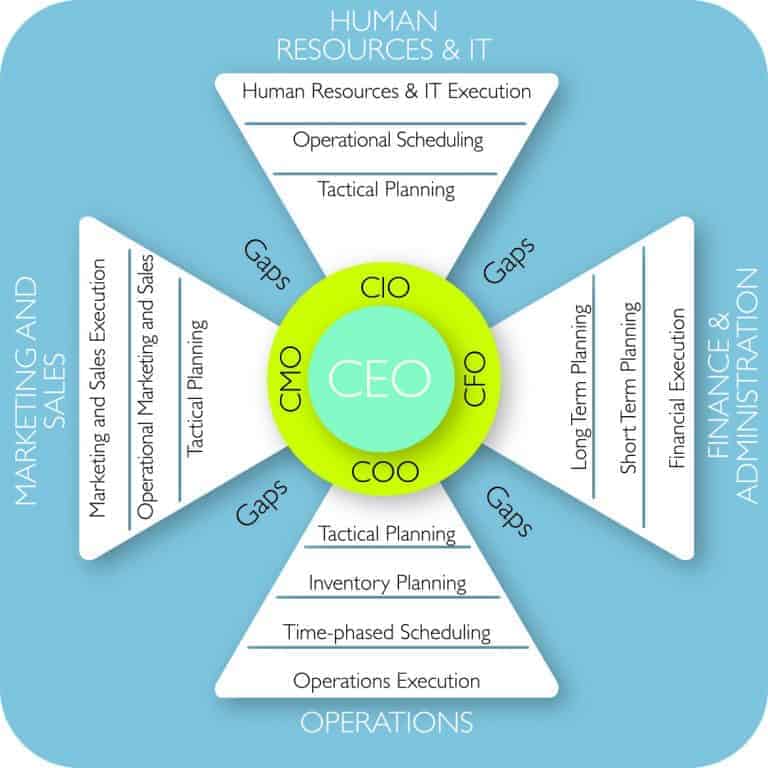Supply Chain Guide - How it can be useful for CFOs ?
It is ironic that though the CFOs are at the absolute center of the universe within their organisations, when it comes to succession into CEOs role, boards are as almost as likely to overlook the CFOs candidature, as they are likely to give them the nod.
At a first sight it looks like a puzzle.
But, when you think about this a bit more your realize that most CFOs are so good at their job, that moving them to a bigger and better role would be a huge loss to the organisation.
If you are a CFO (or in a position close to being a CFO), in this blog post I am not going to show you how to get worse at your job so that you can fill bigger shoes.
Instead, I am going to unpack this phenomenon (some of the observations and stories come from my book UNCHAIN YOUR CORPORATION), so that you can move into bigger roles with an equal ease.
A Real Life Story
Let us start with a real life story (critical details are disguised a bit to make sure we protect the identities of the people involved).
When I flew into the big city with the continental HQ for our client, it was middle of winters. As it so happened, the next day was scheduled for the monthly senior management meeting.
The business had been under-performing for last three years, and everyone was looking for a turnaround, or a scapegoat.
The CEO, and all the regional heads, were strongly sales oriented individuals. They were all cut from the same cloth – strong personalities, heavily market focused and not very analytical.
Other two people in the room were the head of finance, and the head of supply chain. As they all saw it – one of them was charged with making the deliveries, and the other was charged with doing the numbers.
A very simple arrangement in their scheme of the world.

No wonder the company was losing money hands over fist in almost all markets.
Almost all negotiations with the customers were based on seat-of-the-pants calculations made from half baked numbers.
Bluster was common, and in face of threats to use of competitive products, significant price discounts were made available to the large customers who formed bulk of the revenue base.
Not only that, nimbler supply chain partners, well aware of the analytical deficiencies, were milking away the system.
Only Two Problems
The monthly management meeting was an appalling show of solidarity between the regional heads and the CEO who blamed the heads of supply chain and finance (again) for the monthly under-performance.
Almost all problems were attributed to one of two things:
1. Delivery related problems – attributed to the head of supply chain
2. Transactional compliance, budgeting and analytics related problems – attributed to the CFOs
The facts that sales staff were making promises that could not be kept even by supermen at prices that would never make any profits, and that the operations field staff were regularly circumventing
the workflow to reduce their work load, and many other similar happenings, were conveniently overlooked.
Someone’s Gotta Go
In this meeting, in my presence, the CEO ended with an ominous warning that one of the two heads who carried the blame would lose their job if the business did not turn around in the next 3 months
and came within an acceptable variance to the budget.
On the supply chain side, we worked very hard for verifiable turn around of the supply chain (and demonstrate that bulk of the problems originated from the lack of sales discipline).
A number of projects were conceptualised, planned and executed in a short time frame to get supply chain out of the jail house.
On the finance side, I do not know what kind of number massaging was expected from the CFO, but I was unhappy to learn that after a few months he did indeed move on from the organisation.
There are more details which I am not including so that I can focus on the key points of this story.
Why did I recount this story?
Because I believe if he had done something similar to what we did on the supply chain side of the business, he would have clearly demonstrated that the problems did not originate in the finance
department – in the way financial discipline, budgeting and variance calculation was structured and executed.
Unfortunately, all the way through he restricted his thinking to accounting data, and its analysis without getting into the nitty-gritty of the business side of the equation too much.
Even when he attempted to get into business side of the discussion he was thwarted.
That got me thinking
That incident got me thinking quite a bit. I suddenly realised how your history could easily anchor you. Consider the following figure:

You start into a role in finance or accounting at the bottom of the pyramid, and as you get more experience and capability you rise towards the top.
Only those individuals who are exceptionally good at almost all functions in this pyramid will rise to the very top, to get the crown of CFOs .
The problem is that what brought you here, will not be enough to keep you here. And, most certainly, it will not take you any further.
All that competence, all the hard work – burning mid-night hours during audits, millions of zega-bytes of number crunching using the most sophisticated investment banking models, budgetary cycles – all that dedication was great. It brought you up to here.
To go further, it will not be enough.
So what kind of thinking is required?
New thinking in finance is required because supply chain and finance are now so closely inter-linked that you need mastery in both.
This new thinking will extend:
1. BEYOND Compliance – Added layers of auditing and compliance gives more control, but rarely results in higher returns. It gives the right to play, but does not tell you how to play well.
2. Beyond traditional Working Capital Management – Excessive squeeze on the creditors is now counter-productive, and cost of capital is likely to be volatile.
3. BEYOND Dupont Formula and other financial tools – These work very well retrospectively, for post-hoc explanations. As tools for future value creation, their application is limited.
Today, boards expect deeper control over the heart of supply chain finance.
Why?
Because, more than ever before, today, one of the most pressing concerns of every board of directors is CEO and executive succession.
Clearly, the boards want C-LEVEL executives who can step into a CEO’s shoes at a moments notice, if necessary.
So, what distinguishes a C-LEVEL functional expert from a near C-LEVEL?
It is their ability to see the BIG PICTURE. This is not a cliche.
BUSINESS TRANSFORMATION AND LEADERSHIP SUCCESS COMES FROM CROSS FUNCTIONAL INTEGRATION ABILITY.
In other words:
1. Ability to get their functional team to play well with the rest of the functional teams.
2. Ability to take leadership and integrate cross-functional teams.
3. Ability to understand how one function affects another – in depth.
Here is one simple example of a financial tool for business transformation. No school will teach this:

There are many such tools, but most importantly, you will need to design and create your own tools. They all ask (and answer) some common questions.
1. Financial Engineering – view the entire spectrum of Balance Sheet Management, some of which are known to only a few experts. Small differences in these can make a significant impact on shareholder return and outcomes.
2. Strategic Reversal – in the fast moving digital age – why assets might become your biggest liabilities, and liabilities might be your biggest assets – and what companies are doing to create extra-ordinary shareholder value?
3. Profit Optimisation – what lies beyond Cost-to-Serve, and how to leverage big data to optimise margin for every transaction using latest technology (think about UBER and airBNB)?
4. Process Innovation – why process innovation is even more important than product innovation, and what finance tools are available to regularly access process innovation in your situation?
5. Real Strategy – why today’s digitally vocal customers demand REAL supply chain segmentation, not just fake marketing segmentation. How to use this move strategically for financial value creation?
Clearly, it is not easy to do all this. But, neither was it easy to come up the pyramid to the top. Here is a tool which will make it easier – but, in the end, as usual only your own effort will get you there.
If you want more examples such as the smile curve above, I got my assistant to make a 104 page document with sanitized selections from our past projects executed over the last 18 years.
It may give you more ideas for similar tools for your business. Contact me on [email protected] for the document (available selectively).





